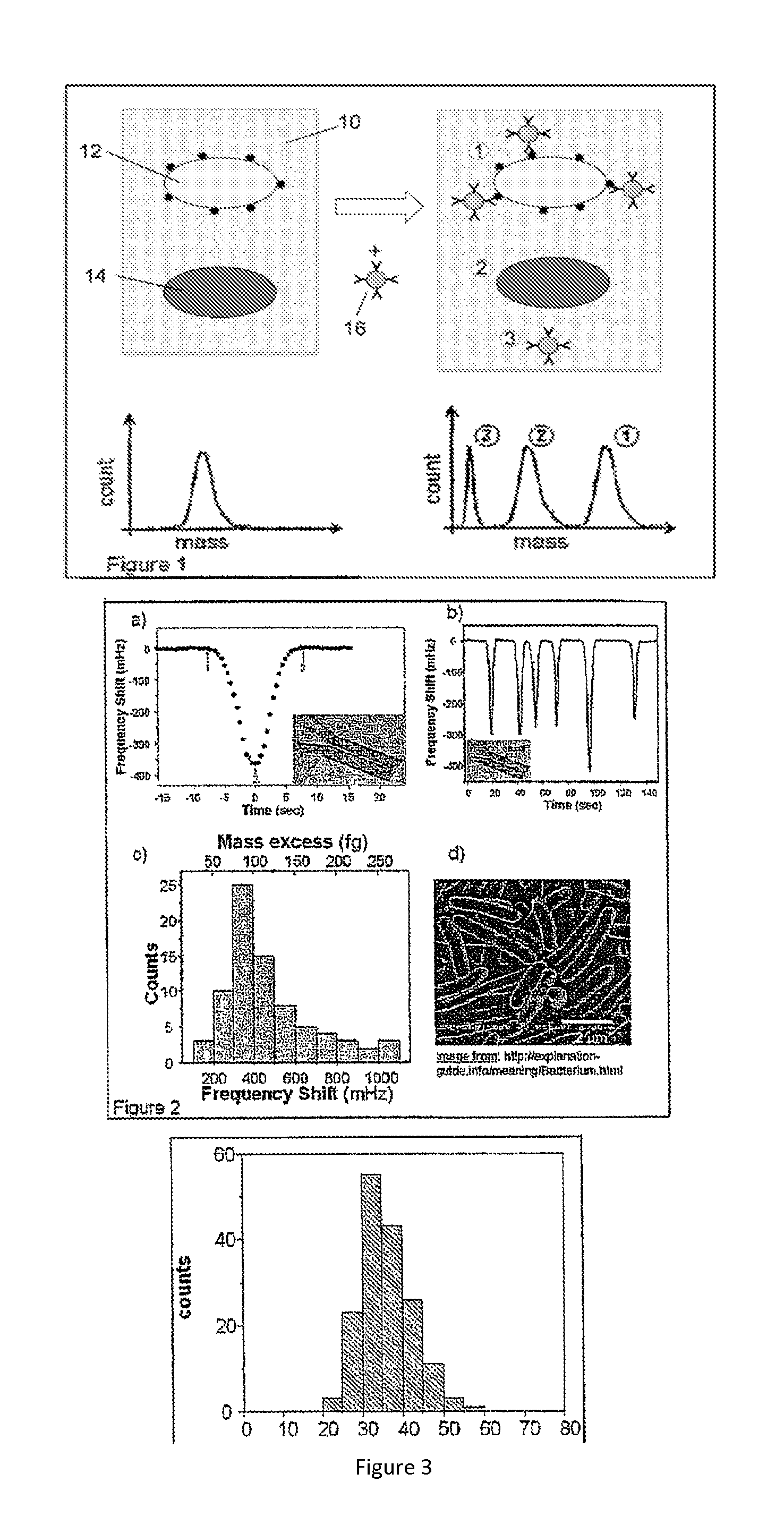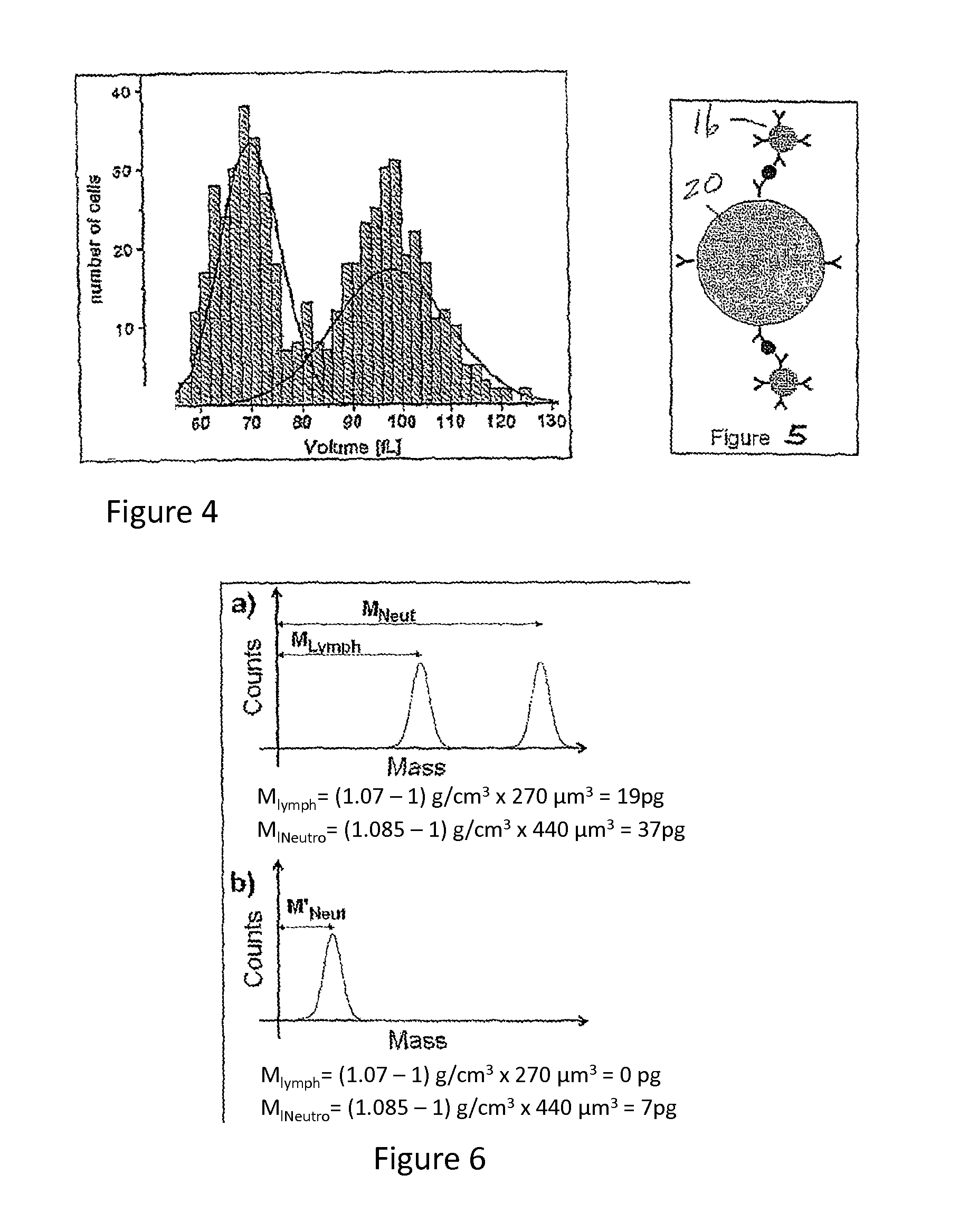Flow cytometry methods and immunodiagnostics with mass sensitive readout
a flow cytometry and readout technology, applied in chemical methods analysis, instruments, biomass after-treatment, etc., can solve the problem of directing the cost of building fcms toward optical readout, and achieve the effect of increasing the throughput of an integrated mass readou
- Summary
- Abstract
- Description
- Claims
- Application Information
AI Technical Summary
Benefits of technology
Problems solved by technology
Method used
Image
Examples
Embodiment Construction
[0030]Micro- and nanomechanical resonators enable the direct measurement of mass on the molecular scale through observation of shifts in resonant frequency. Sub-micron thick resonators operating in high vacuum are capable of resolving masses of a few zeptogram, and similar devices have been used to detect single virus particles and the adsorption of molecular monolayers in air. The prospect of achieving such sensitivity together with the high scalability and low cost manufacturing associated with semiconductor processing has stimulated great interest in applying resonant mass detection to chemical and biological applications. Heretofore, however, only resonant transducers operated in air or vacuum have been able to provide sufficient resolution for such applications. The inventors herein have recently shown that fluid filled microfabricated resonators remove this limitation and can measure a mass of less than a femtogram in an aqueous environment. A significant aspect to achieving s...
PUM
| Property | Measurement | Unit |
|---|---|---|
| diameter | aaaaa | aaaaa |
| height×width | aaaaa | aaaaa |
| height×width | aaaaa | aaaaa |
Abstract
Description
Claims
Application Information
 Login to View More
Login to View More - R&D
- Intellectual Property
- Life Sciences
- Materials
- Tech Scout
- Unparalleled Data Quality
- Higher Quality Content
- 60% Fewer Hallucinations
Browse by: Latest US Patents, China's latest patents, Technical Efficacy Thesaurus, Application Domain, Technology Topic, Popular Technical Reports.
© 2025 PatSnap. All rights reserved.Legal|Privacy policy|Modern Slavery Act Transparency Statement|Sitemap|About US| Contact US: help@patsnap.com



